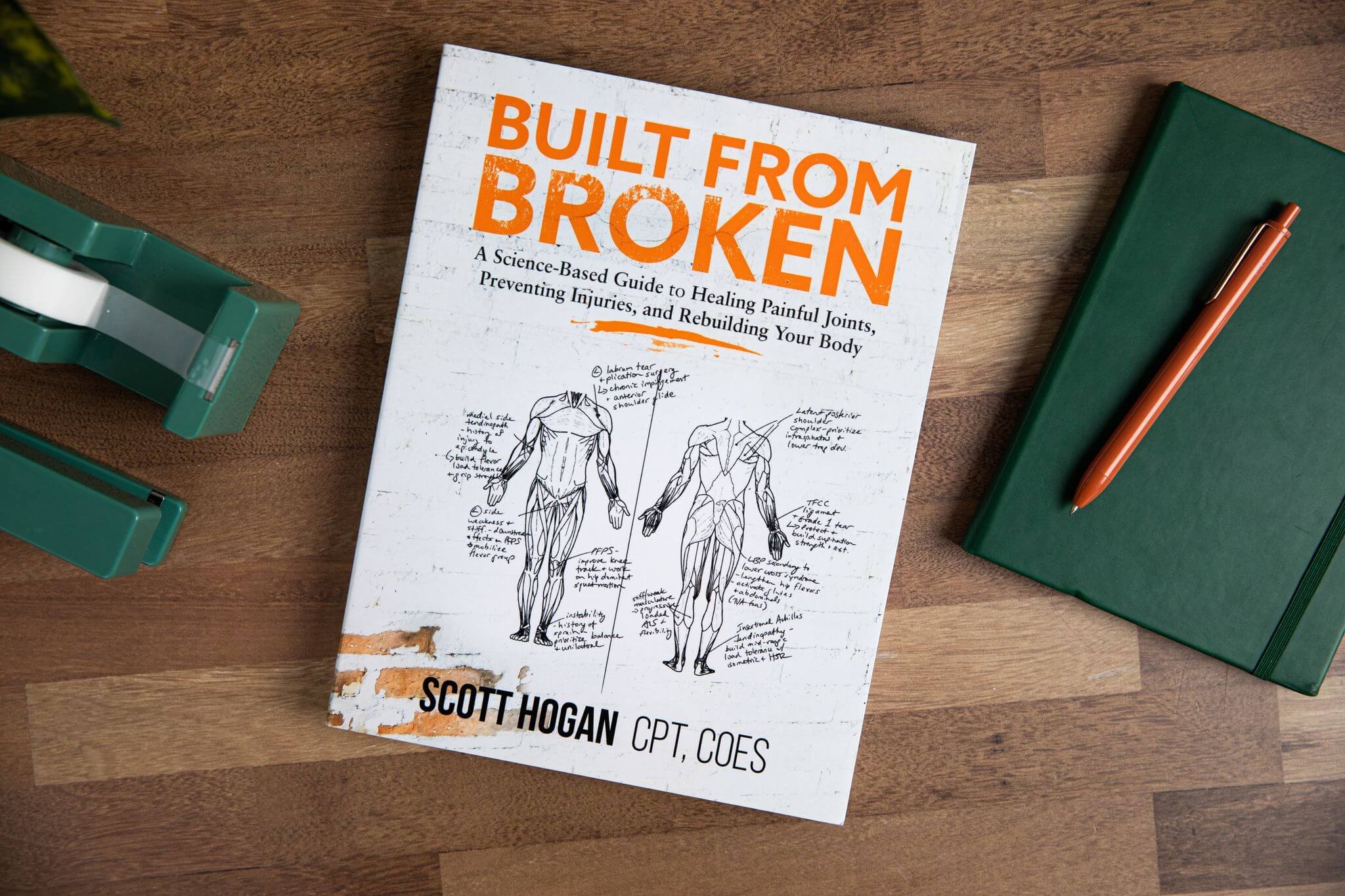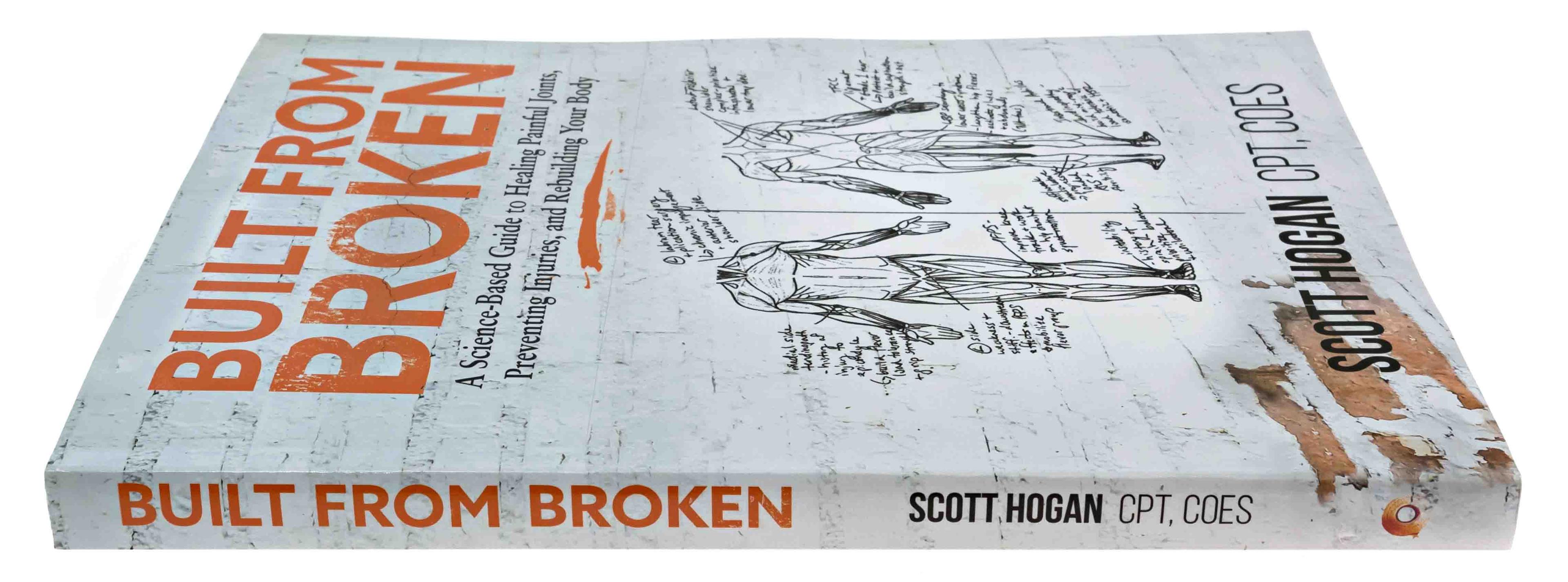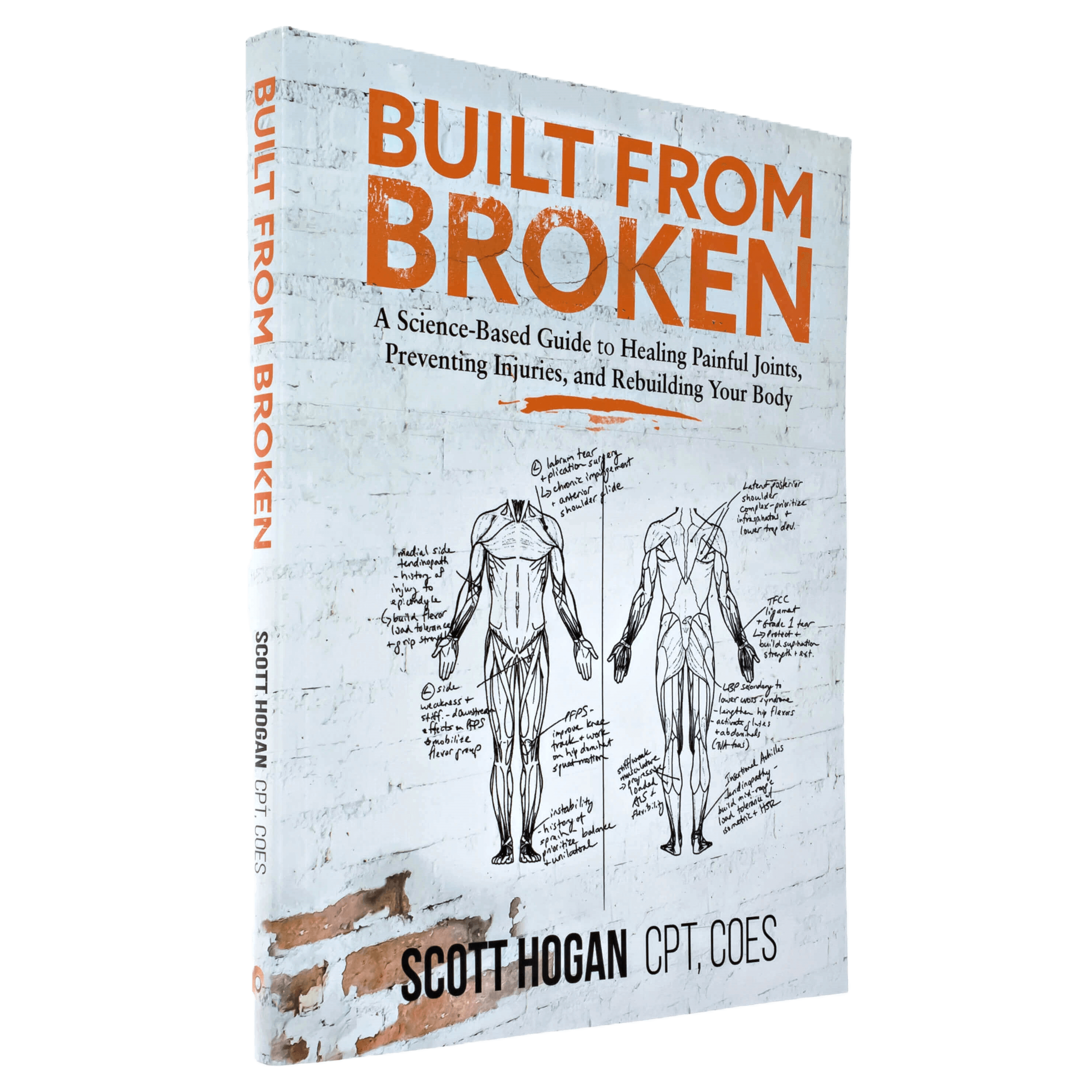
How Stretching Can Make Low Back Pain Worse (And The Exercises Proven to Provide Safer Relief)
Written by Scott Hogan, ACE-CPT, COES
Author of Built From Broken
One of the most pervasive myths about low back pain is that you can fix it by stretching.
But the research on stretching for low back pain is not flattering.
In fact, stretching often does more harm than good.
A 2011 metastudy (study of studies) revealed that stretching has “no significant effect.”1
It gets worse. Stretching before exercise not only impairs performance, it also increases injury risk.2,3
The data is clear on this.
So why has mainstream medicine and fitness been so slow to adopt this new thoroughly documented science?
For two main reasons:
-
Virtually every treatment is aimed at resolving the symptoms of low back pain — not the root cause. A pill or injection might provide temporary relief, but does nothing to target the underlying cause. Masking the pain merely increases risk of further injury.
-
Most people do lack basic flexibility, which makes it easy for practitioners and trainers to point the finger at flexibility and recommend stretching. It’s a classic case of confusing correlation with causation.
In this article, I'll explain the most common causes of low back pain, and the three targeted exercises proven to provide fast, lasting relief.
These are the same exercises I’ve prescribed for hundreds of clients and thousands more online coaching clients. They’re simple, easily performed at home without equipment, and laser-targeted at the core causes of low back pain.
To understand why stretching makes low back pain worse, and what to do instead, we first must understand why low back pain develops in the first place.
What Causes Low Back Pain?
Put simply, the low back (lumbar spine) isn’t designed to be mobile relative to other joints.
The main function of the low back is to hold up the weight of your upper body.
It’s primarily a “stability joint.” It stabilizes your trunk while you stand upright, bend over, and twist, all while protecting your spinal cord from injury.
Figure 8.1 below from my book Built From Broken illustrates how the body’s chain of joints is made of stability and mobility joints in alternating fashion.
Mobility joints are designed for extreme ranges of motion, while stability joints are designed to hold the system together.

As you can see, the low back is surrounded by two “mobility joints” — the hips and the upper back.
And herein lies the problem.
Weakness in the hips and upper back forces the low back to compensate and become more mobile than it is designed to be.
This increased repetitive movement and load adds up, causing damage to the tendons and ligaments that comprise your lumbar spine.
The problem isn’t technically even with your low back. It’s the surrounding joints!
In other words, low back pain is often a downstream problem caused by deficiencies in your hips and upper back.
The Low Back Is Not Designed to Be Stretched! Do This Instead
Now, you can see why further stretching the already irritated muscles, tendons, and ligaments around your low back is a bad idea.
And, hopefully now you can see a path forward. The fundamental problem is that we’ve been treating the low back like a mobility joint instead of a stability joint.
The solution is not stretching the low back, but activating the hips and upper back — and making them do their fair share.
This effectively takes the tension off the problem area of your low back, allowing symptoms to naturally resolve.
There are dozens of exercises and stretches for the hips and upper back. But these three provide the biggest bang for your buck.
If you do these right, you’ll get relief.
First, we need to wake your butt (muscles) up from their slumber.
Then, we need to mobilize the joints above and below your low back without putting additional stress on it.
Here’s how.
Step 1: Activate your glutes with these two moves.
For as much attention as the glutes get from an aesthetic perspective, they are underrated for their role in virtually every lower body movement.
The glutes are (or should be) the prime moving muscles for hip-dominant movements like bending and squatting.
They provide joint stability not just for your low back but also your knees and lower legs.
Prolonged sitting, imbalanced exercise habits, and a sedentary lifestyle can cause your glute muscles to atrophy and lose their ability to contract properly.
This condition is called gluteal amnesia.
When this happens, your low back has to step up and become the prime mover of even basic movements instead of filling its role as a stabilizing joint.
This puts you at risk of acute low back injuries and chronic pain from overuse. Even walking can put unnecessary stress on your joints if you aren’t using your glutes properly.
It’s a common problem. And luckily it can be remedied quickly, typically in just a few sessions.
Your glutes will remember what they are supposed to do with a little nudging.
After doing the first two exercises below, you’ll feel those muscles waking up!
If you want more in depth exercise descriptions, you can get a free copy of my best-selling book Built From Broken here.
We’ve also recently launched our first online course that walks you through the process of rebuilding your body from the inside out (based on the most important Built From Broken principles).
Now, for the exercises! Watch the videos below, and do these twice daily. It's really that simple.
Exercise 1: Fire Hydrant
Instructions: Complete 20 repetitions on each leg. It's OK to pause between repetitions if you get tired. As long as you complete all 20 repetitions.
Exercise 2: Glute Bridge
Instructions: Complete 20 repetitions, holding the top position for a moment between each repetition.
Step 2: Mobilize the joints surrounding your low back with this stretch.
After you’ve woken up the glutes, it’s time to activate the upper back (thoracic spine) and hips.
When these joints are tight, your low back is forced to flex and carry loads that it’s not designed for.
When these joints are flexible, your low back has permission to stand strong and stable.
Exercise 3: World's Greatest Stretch
Instructions: Complete 5 repetitions of this movement with your right leg forward. Switch leg positions, then complete 5 more repetitions.
Your Daily Low Back Pain Protocol
That's it! Just these three moves can relieve and prevent back pain when performed daily.
Each day, perform these exercises in order. For best results, do them once in the morning, and once in the evening:
-
Fire Hydrant: 20 repetitions per leg
-
Glute Bridge: 20 repetitions (or, 10 repetitions of the one-leg variation on each side)
-
World's Greatest Stretch: 5 repetitions on each side of your body
If you found this article helpful, you're going to love my award-winning book. It's a complete guide to healing painful joints, preventing injuries, and rebuilding your body.
Get a Free Copy of Built From Broken (My Best-Selling Book)
Right now I’m giving away free paperback copies of my best-selling pain relief and injury management book, Built From Broken, when you enroll in our 8-Week Master Class.
With over 148,000 copies sold, Built From Broken is the #1 best-selling book in Pain Management, Osteopathy, and Exercise for Injury Rehabilitation.
Why give it away for free, despite it being one of the bestselling fitness books in the world?
Honestly, it’s an experiment. I believe this book can help our company reach more people. And we know that some of our best clients and customers are those who found SaltWrap after reading my book.
So we’re giving away free copies to connect with more people like you.
In the future, we’ll be offering more online coaching, courses, and consultations. This is the just the first step.
If you’re interested, click the button below to get started, and start rebuilding today.

You feel beat up and broken down. And in pain. Despite exercising, eating healthy, and following mainstream fitness advice.
Sound familiar?
Most middle-aged athletes accept the commonly repeated mantra of "it's just part of getting older." But science proves otherwise.
Joint pain, stiffness, and even reduced muscle strength and performance are not unavoidable side effects of aging.
You should be able to do the activities you want, play sports, lift weights, run, bike, and swim pain-free.
If you're constantly battling joint pain and injuries — despite your best efforts to eat right and exercise smart — it's time to change your approach.
And if this resonates with you, you're in the right place.
My book has helped thousands of people regain their strength, mobility, and pain-free lifestyle.
You can be the next.
The Award-Winning, Proven System for Rebuilding Your Body
As Featured In:
Real Reviews, Real Readers
-
Kay, A. D., & Blazevich, A. J. (2012). Effect of acute static stretch on maximal muscle performance: A systematic review. Medicine and Science in Sports and Exercise, 44(1), 154–164. https://doi.org/10.1249/MSS.0b013e318225cb27
-
Young, W. B. (2007). The use of static stretching in warm-up for training and competition. International Journal of Sports Physiology and Performance, 2(2), 212–216. https://doi.org/10.1123/ijspp.2.2.212
-
Witvrouw, E., Mahieu, N., Danneels, L., & McNair, P (2004). Stretching and injury prevention: An obscure relationship. Sports Medicine, 34(7), 443–449. https://doi.org/10.2165/00007256-200434070-00003
*These statements have not been evaluated or approved by the Food and Drug Administration.
This product is not intended to diagnose, treat, cure or prevent any disease.
Copyright © SaltWrap, All Rights Reserved
Disclaimer: Representations regarding the efficacy and safety of our products have not been scientifically substantiated or evaluated by the FDA. The FDA only evaluates foods and drugs, not these products. Nothing contained on this site is intended to diagnose or cure.
Should you have any health care related questions, please contact your physician. You should always consult your physician before taking any nutritional supplements, making changes to your health or fitness regimens, or implementing any health related advice. Results will vary depending on the circumstances of each individual. Prior results do not predict, warrant or guarantee a similar outcome. Read our full Disclaimer here. This site is not a part of the Facebook website or Facebook Inc. Additionally, this site is NOT endorsed by Facebook in any way. FACEBOOK is a trademark of Facebook™, Inc.
HELP CENTER | ABOUT US | DISCLAIMER | TERMS AND CONDITIONS | PRIVACY POLICY





